Muscovy Duck Pest Control: Strategies and Insights
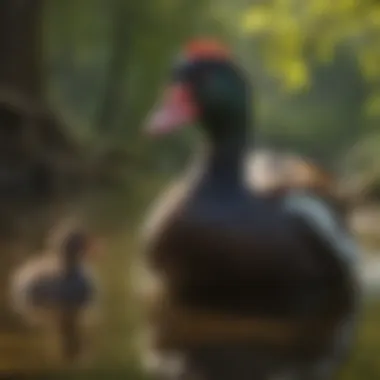
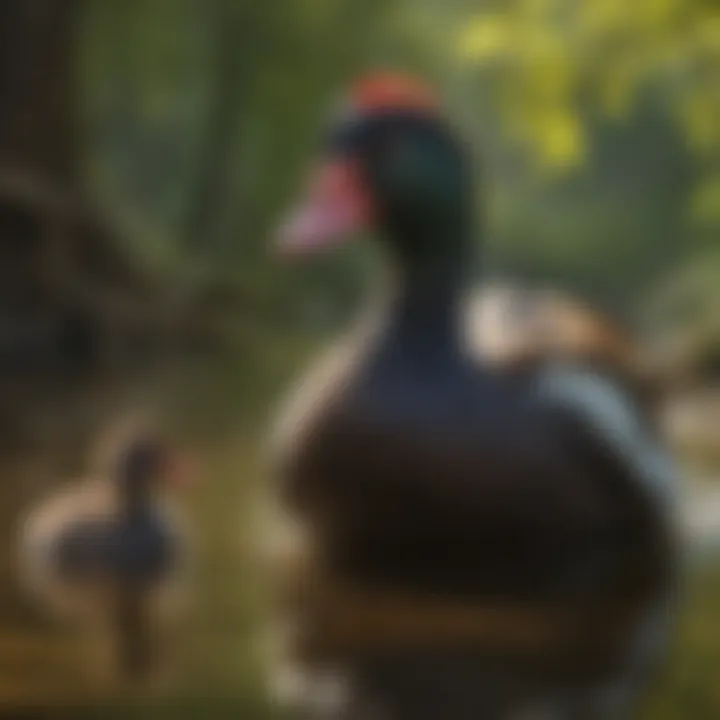
Intro
Muscovy ducks are often considered charming additions to local wildlife. However, their presence can lead to various problems in both agricultural and residential settings. Their feeding habits, particularly their propensity to forage for insects and crops, can significantly impact gardens and farms. Understanding why these ducks become pests in certain environments is the first step towards implementing effective control strategies. This article aims to provide insight into managing Muscovy duck populations through eco-friendly pest control methods.
Understanding the Pest
Identification
Muscovy ducks are distinct from other duck species. They have a unique appearance with black and white plumage, red facial caruncles, and a large, robust body. Adult males typically weigh between 7 to 15 pounds, while females weigh slightly less, ranging from 4 to 8 pounds. Their size and color variations make them relatively easy to identify. Additionally, their noisy quacks set them apart from other domestic ducks, which typically have softer sounds. Understanding the characteristics of Muscovy ducks is crucial when assessing their impact on different environments.
Life Cycle
Muscovy ducks reproduce prolifically. The breeding season generally begins in early spring and can extend through summer. A female typically lays a clutch of about 8 to 14 eggs, which she incubates for around 35 days. Ducklings are precocial, meaning they can swim and forage for food almost immediately after hatching. This rapid development allows their populations to grow quickly, necessitating swift action in pest management strategies. Knowing their life cycle and breeding habits is essential for implementing timely interventions.
Pest Prevention Strategies
Environment Modification
Adjusting the environment can help deter Muscovy ducks from settling in unwanted areas. Here are some strategies:
- Remove food sources by securing trash and compost bins.
- Limit standing water that may attract ducks for breeding.
- Maintain gardens in a manner that does not provide easy access to seeds and other food.
By making these changes, ducks may be discouraged from frequenting specific locations.
Physical Barriers
Utilizing physical barriers can also deter Muscovy ducks. Options include:
- Fencing that is at least 4 feet high and buried underground to prevent burrowing.
- Netting or mesh over gardens can keep ducks from accessing plants.
These measures create a less hospitable environment for the ducks without harming them.
Control Methods
Chemical Control
In some cases, chemical control may be necessary. Products containing repellents specifically designed for waterfowl can be effective. It is important to select eco-friendly options to protect the surrounding ecosystem. Always follow the manufacturer's instructions when applying these chemicals to ensure safety for all wildlife and plants in the area.
Biological Control
Biological control involves the introduction of natural predators or competitors. Certain bird species, like hawks, can keep Muscovy duck populations in check. However, this method requires careful planning to avoid disruptions in the local ecosystem. It's vital to assess the potential effects of introducing new species before proceeding.
Effective pest management of Muscovy ducks requires a combination of strategies, focusing not just on control but also on prevention and ecological harmony.
By implementing these strategies and understanding Muscovy ducks' behaviors and life cycles, homeowners, agricultural professionals, and pest management experts can effectively manage this species in a practical, sustainable manner.
Preamble to Muscovy Ducks
Muscovy ducks have become a topic of interest for many homeowners and agriculture professionals. Their unique characteristics and habits can pose significant challenges in various settings. Understanding these ducks is crucial for effective pest control. This section serves as a foundation, highlighting their importance, behaviors, and impacts within the ecosystems they inhabit.
Understanding Muscovy Duck Characteristics
Muscovy ducks exhibit distinctive traits that differentiate them from other duck breeds. They are larger, with males weighing up to 15 pounds. Their plumage ranges from dark green to black, often enhanced with white wing markings. Their red facial caruncles give them a unique appearance, often leading to confusion with other waterfowl.
These ducks are noted for their adaptability. They can thrive in various environments, from wetlands to urban areas. Their social behavior is complex; they can form strong bonds with their flock but are also known to roam alone. Understanding these characteristics is essential for pinpointing potential issues related to their presence. Their foraging behavior is not limited to aquatic plants; they often feed on insects, grains, and even small animals, which can contribute to agricultural damage.
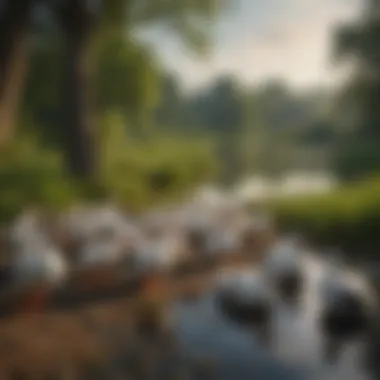
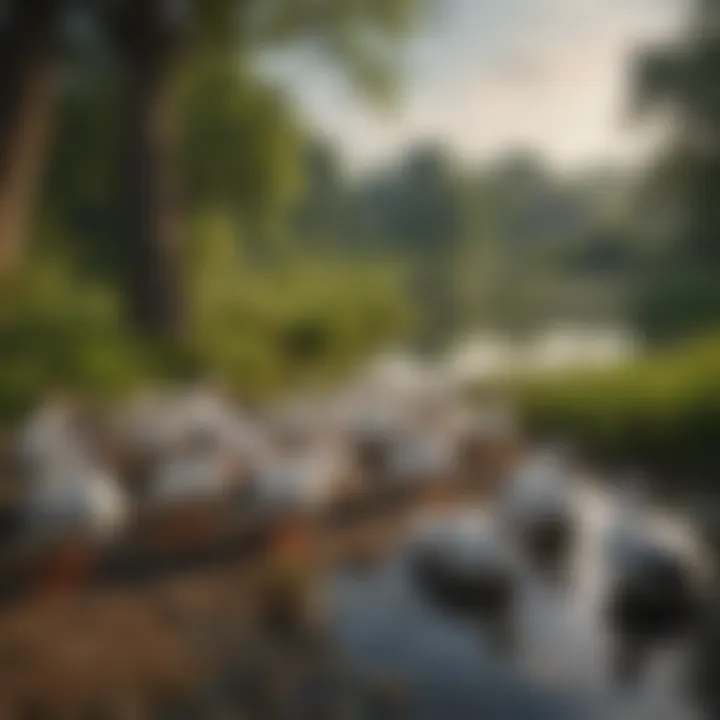
Natural Habitat and Distribution
Muscovy ducks are originally native to Central and South America, but they have adapted to a variety of habitats. They are often found near freshwater sources, such as rivers, lakes, and ponds. However, they can also inhabit urban areas where they find suitable nesting sites and food sources. This adaptability has led to their presence in many regions across the United States.
Their ability to thrive in urban environments presents challenges for homeowners. The propensity of Muscovy ducks to nest in residential areas can lead to issues, such as droppings affecting properties. Additionally, their feeding habits can result in damage to gardens and agricultural crops. It is vital for residents to recognize where these ducks are likely to establish themselves to preemptively address potential disturbances.
Ecological Role of Muscovy Ducks
Understanding the ecological role of Muscovy ducks is crucial as it informs both the benefits and challenges their presence can have in various environments. These birds are not only compelling due to their quirky appearance but also because their behaviors can significantly impact local ecosystems.
Feeding Behavior and Its Implications
Muscovy ducks are omnivorous, which means their diet is diverse. They consume a variety of foods, including aquatic plants, insects, and small fish. This feeding behavior contributes to their role in nutrient cycling within ecosystems.
By foraging on different food sources, they assist in controlling insect populations. This can be beneficial for agricultural practices where pest control is essential. However, their feeding can also lead to damage to crops or gardens if populations rise too high.
The implications of their feeding behavior are twofold:
- Positive impact: In gardens and farms, they can help reduce pest populations naturally.
- Negative impact: If not managed, Muscovy ducks may overconsume foliage or seeds, leading to ecological imbalance.
Impact on Local Ecosystems
Muscovy ducks can influence habitats where they reside. Their nesting habits often involve using shrubbery and water bodies, which affects the plant community and the animals that depend on these environments. The presence of Muscovy ducks may change the structure of local plant life, potentially allowing for the domination of some species over others.
Moreover, they can alter water quality. Their droppings are nutrient-rich, which could lead to eutrophication in water bodies if populations are not controlled. Eutrophication causes excessive growth of algae, which can deplete oxygen levels and harm aquatic life.
The duality of their role signifies a need for careful management of Muscovy ducks to maintain balanced ecosystems.
Thus, it is important for homeowners and agricultural professionals to understand these dynamics. Awareness of how Muscovy ducks contribute to and impact local ecosystems can lead to better pest management strategies that are not only effective but also eco-friendly.
Identifying Problems Associated with Muscovy Ducks
Understanding the challenges posed by Muscovy ducks is essential for effective management and control. This section addresses the problems these ducks may create in various environments, especially urban and agricultural settings. Recognizing these issues enables property owners and pest management professionals to devise appropriate control strategies. Furthermore, a clear identification of problems serves as a foundation for developing informed responses that can mitigate negative impacts while promoting cohabitation when possible.
Common Issues in Urban Environments
Muscovy ducks in urban areas can create several disturbances. One major concern is their feeding behavior. These ducks tend to forage for food in public spaces, such as parks and gardens. Their diet can include flowers, fruits, and vegetables, leading to damage in residential landscaping. Additionally, they may scavenge through trash for food, contributing to unsightly litter and attracting pests.
Another issue is their nesting habits. Muscovy ducks are known to nest in various locations, including rooftops, balconies, and even near doorways. This can create inconvenience for residents as well as lead to property damage. Moreover, the presence of nests may deter other species or lead to conflicts with pets.
The accumulation of droppings from Muscovy ducks poses health concerns as well. Their waste can contaminate water sources, fostering an environment conducive to certain bacteria and diseases. This scenario poses risks not only for public health but also for local wildlife.
Problems on Agricultural Lands
In agricultural settings, Muscovy ducks can become particularly problematic. Firstly, they are known to feed on crops such as grains and fruits, which can result in significant reductions in yield. Damage can range from minor nibbling to complete devastation of crops, turning a once-thriving farm into a financial burden.
Beyond feeding on crops, Muscovy ducks can also disrupt livestock. Their presence may lead to stress in farm animals, influencing overall productivity. Certain animals may view the ducks as intruders, leading to aggression or erratic behavior.
Furthermore, the persistence of Muscovy ducks in agricultural regions can promote the spread of diseases among both ducks and livestock. It is essential that farmers address these concerns head-on to prevent complications that arise from mingling species.
In summary, identifying the problems associated with Muscovy ducks is vital for developing effective management strategies that safeguard both residential and agricultural interests.
By understanding these challenges thoroughly, stakeholders can move towards proactive solutions that minimize negative impacts while fostering a balanced ecosystem.
Regulatory Framework and Guidelines
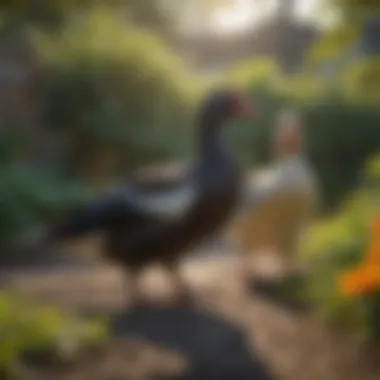
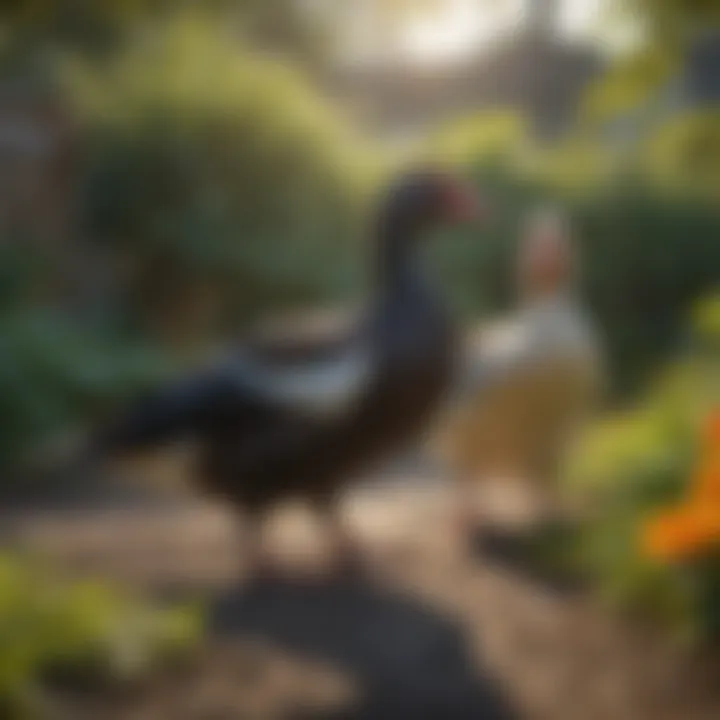
Understanding the regulatory framework surrounding Muscovy ducks is crucial for effective pest control. This framework includes local and federal regulations that govern the management of wildlife. Complying with these regulations ensures that pest control methods are not only effective but also humane and environmentally sound. The benefits of adherence to these guidelines are significant, as they promote responsible management practices while protecting the rights of property owners and the welfare of wildlife.
Local and Federal Regulations
Local and federal regulations can significantly influence how one manages Muscovy duck populations. Different areas may have specific rules regarding the handling, relocation, or removal of these birds.
- Local Regulations: Often vary greatly depending on the municipality. For example, some cities may have strict laws about feeding wild ducks, while others may prohibit nesting near residential areas. Knowing these requirements will help homeowners avoid fines and ensure their actions align with community values.
- Federal Regulations: The Migratory Bird Treaty Act may apply to Muscovy ducks in some regions, which protects many bird species. It is important to check whether the local population falls under this act, as it restricts certain control measures and encourages non-lethal methods of management.
Staying informed about both local and federal guidelines can aid in minimizing conflicts with authorities while addressing issues posed by Muscovy ducks.
Best Practices for Compliance
Effective compliance with regulations is essential to managing Muscovy ducks sustainably. Here are some best practices to consider:
- Research Local Laws: Before taking any action, conduct thorough research on local regulations governing wildlife. This includes understanding any permits or permissions required for certain actions.
- Consult Experts: Engage with local wildlife authorities or professional pest control services. They can provide insights into best practices and legal requirements.
- Implement Non-Lethal Control Measures: Focus on humane strategies such as exclusion and habitat modification to deter Muscovy ducks. Non-lethal methods not only comply with regulations but also contribute to a better reputation among neighbors and within the community.
- Document Actions: Keep written records of any control measures taken. This can provide evidence of compliance should any questions arise.
"Respecting regulations not only enhances the effectiveness of pest control strategies but also fosters community trust and environmental stewardship."
By adhering to these best practices, homeowners can ensure they engage in responsible pest management that aligns with regulations, promoting a balanced ecosystem.
Effective Control Strategies
Effective control strategies are essential in managing Muscovy duck populations, particularly in areas where their presence can create conflicts. The implementation of these strategies can minimize negative interactions with humans and protect local ecosystems. Additionally, they provide a sustainable approach to coexistence, making them conducive for both urban and rural settings. Successful Muscovy duck management requires an understanding of their behavior and habitat preferences. By employing effective control methods, communities can safeguard their environment and resources while respecting wildlife's role.
Exclusion Techniques
Exclusion techniques involve creating barriers or conditions that prevent Muscovy ducks from accessing specific areas. This method is crucial for preventing ducks from nesting or feeding in unwanted locations, particularly around homes, gardens, and farms. Here are several strategies:
- Fencing: Installing a tall fence around gardens and key areas can physically prevent ducks from entering. Ensure the fence is at least four feet high to deter even the best jumpers.
- Netting: Using bird netting over vulnerable crops protects them from feeding by ducks. This method allows for ventilation and sunlight while keeping pests out.
- Sealing Openings: Close off areas under porches, decks, or other structures where ducks might nest or seek shelter. Using solid materials rather than mesh helps keep out wildlife.
Employing thorough exclusion techniques will reduce the potential for conflicts and support the management efforts regarding Muscovy ducks.
Habitat Modification
Habitat modification involves altering the environment to make it less hospitable for Muscovy ducks. By changing the physical landscape, it is possible to discourage their presence without harming them. Some practical measures for habitat modification include:
- Water Management: Reducing standing water, which attracts ducks for feeding and nesting. Filling in ponds or drainage areas, along with making water bodies smaller, can help.
- Landscaping Changes: Choose shrubbery or plants that are less appealing to Muscovy ducks for landscaping. Reducing food sources like tall grasses and certain weeds will help decrease their attraction.
- Crop Rotation: For agricultural areas, using crop rotation may write off certain food sources during planting and harvesting cycles, impacting the feed availability for Muscovy ducks.
These modifications not only protect specific areas but also help influence Muscovy duck habits in the long run.
Deterrents and Repellents
Using deterrents and repellents can effectively manage Muscovy ducks by making locations less attractive without causing harm. Such strategies include:
- Visual Deterrents: Scare devices that mimic predators or create movement can dissuade ducks from approaching. Items such as reflective tape, wind spinners, and plastic owl figurines may be useful.
- Sound Devices: Sonic deterrents create concerning noises for ducks, thereby encouraging them to relocate. However, it is important to ensure that these do not disrupt human activities or cause disturbance to other wildlife.
- Chemical Repellents: Some non-toxic chemicals may deter ducks from feeding in specific areas. Always follow guidelines to choose safe products that do not harm surrounding species or environments.
Overall, combining several strategies will create a more effective control plan, addressing the issues posed by Muscovy ducks thoughtfully and effectively.
Community Engagement in Pest Control
Community engagement plays a paramount role in managing Muscovy duck populations effectively. This approach goes beyond individual efforts and taps into the collective strength of neighborhoods and local organizations. Engaging the community fosters shared responsibility and enhances the potential for sustainable solutions. When residents and local bodies collaborate, they can create an environment that supports both wildlife and humans.
Moreover, community involvement ensures that everyone understands the importance of eco-friendly principles in Muscovy duck management. It is essential that people recognize both the benefits of these birds and the challenges they can pose. By facilitating open discussion about experiences with Muscovy ducks, communities can better strategize their pest control efforts.
Creating Awareness Programs
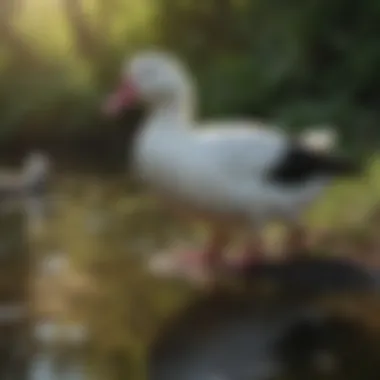
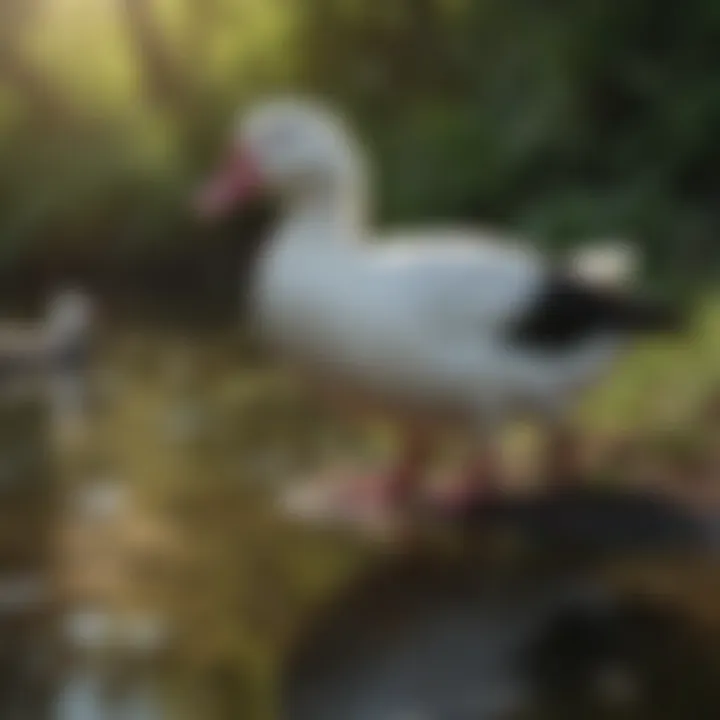
Awareness programs are critical in educating residents about the ecological role of Muscovy ducks and the potential issues they can cause. They serve to inform people about the behavior and nesting habits of these ducks, enabling homeowners to take proactive measures. Informative campaigns can include presentations, pamphlets, and workshops that provide clear guidelines on how to minimize conflicts with Muscovy ducks.
These programs can also integrate success stories from local residents who have effectively managed duck populations. This sharing of knowledge creates a sense of community and encourages others to take informed action. For instance, when people learn about how small changes, such as securing trash bins or using specific landscaping techniques, can reduce duck attraction to their properties, they are more likely to participate.
Collaboration with Local Authorities
Partnership between residents and local authorities is crucial for effective pest control strategies. Local governments often have unique resources and expertise that can enhance community efforts. For example, they can provide access to educational resources or even logistical support when implementing larger-scale strategies.
Regular meetings with local authorities allow residents to voice their concerns and suggest tailored solutions fitting their specific environments. This collaborative framework ensures that management strategies are not just effective but also compliant with local regulations. In addition, authorities can help coordinate community-focused initiatives such as duck relocation programs or habitat restoration projects.
"Ensuring a community-centered approach to pest control allows for a better understanding and ultimately a more effective management of Muscovy ducks. Each voice matters in building a cohesive strategy."
In summary,
- Engaging the community fosters cooperation and shared responsibility.
- Awareness programs educate residents on managing interactions with Muscovy ducks.
- Collaborations with local authorities enhance the effectiveness of community efforts.
This multifaceted approach can lead to long-term solutions that respect the ecological impact of Muscovy ducks while addressing the concerns of homeowners.
Long-Term Management Practices
Long-term management practices are crucial for effectively mitigating the challenges posed by Muscovy ducks in both urban and rural settings. These practices focus on sustainable strategies that ensure the population of these ducks remains balanced with the environment while minimizing their negative impacts. By adopting a long-term perspective, homeowners and agricultural professionals can develop approaches that blend animal welfare and ecological integrity.
Monitoring and Assessment
Monitoring and assessment are foundational components of long-term management. Regular observation helps to track Muscovy duck populations, their distribution, and their behavior. This data is invaluable for understanding how these ducks interact with their surroundings. Here are several key points to consider in this area:
- Frequency of Data Collection: Consistent and frequent monitoring allows for timely responses to population changes. Monthly assessments can provide insights into breeding patterns and seasonal migrations.
- Habitat Evaluation: Assessing the habitats where Muscovy ducks congregate is essential. Identifying key areas of nesting and feeding can inform strategies for habitat modification.
- Impact Measurement: Evaluating the ecological impact of Muscovy ducks helps in understanding their role in the local ecosystem. This information can guide conservation efforts and pest control strategies.
"Assessment provides the data necessary for informed decision-making and effective intervention."
Using tools such as GPS tracking and camera surveys can enhance the accuracy of monitoring efforts. Community participation can also play a role here, as local residents often have insights about the ducks' behaviors and movements that can aid in assessment efforts.
Adaptive Management Strategies
Adaptive management strategies are essential when dealing with Muscovy ducks, as they allow for flexibility in response to new data and changing conditions. Here are some aspects to consider:
- Feedback Loops: Integrating feedback from monitoring efforts ensures that management strategies are continuously refined. If a particular approach is not yielding desired results, it can be promptly adjusted.
- Collaboration: Working with local authorities and wildlife experts helps in sharing knowledge and resources, which can improve management outcomes. Collaboration fosters a community-oriented approach where everyone's input is valued.
- Ecologically-Based Solutions: Strategies that align with ecological principles are fundamental. For example, if certain predator species can help control Muscovy duck populations naturally, their presence should be safeguarded rather than eliminated.
Implementing adaptive management requires a commitment to learning and evolving practices. This approach assures that any interventions remain effective and considerate of both human and wildlife needs. By focusing on adaptable strategies, communities can achieve sustainable control of Muscovy duck populations while promoting biodiversity.
Finale
In discussing Muscovy duck pest control, the conclusion synthesizes the key elements and underscores the importance of implementing strategic measures. As urban and rural environments evolve, the need to manage Muscovy duck populations becomes critical. These ducks possess unique characteristics that can lead to significant disturbances in both urban landscapes and agricultural settings if left unchecked.
Understanding the various feeding behaviors of Muscovy ducks allows home and landowners to develop informed strategies. For example, regulating food sources and utilizing exclusion techniques can greatly reduce the presence of these ducks. Additionally, adopting eco-friendly practices is not just beneficial for pest control but also contributes to the long-term health of local ecosystems.
This article highlights the necessity of a balanced approach, where control strategies are harmonized with ecological stewardship. Techniques discussed such as habitat modification and community engagement reflect a growing trend toward sustainable pest management. By recognizing the implications of Muscovy duck activity, stakeholders gain insight into potential impacts on urban landscaping and agricultural productivity.
The benefits of effective management include minimized conflicts between ducks and human interests, enhanced agricultural yield, and improved quality of life for residents. As more individuals become aware of the challenges posed by Muscovy ducks, a collaborative community response can foster an environment where both species coexist beneficially.
"Effective Muscovy duck management requires a holistic approach that considers ecological, agricultural, and community aspects."
Summary of Key Points
- Muscovy ducks can create significant disturbances in urban and rural settings.
- Strategic control measures involve understanding their feeding behaviors and nesting habits.
- Eco-friendly practices not only reduce conflicts with ducks but promote environmental health.
- Community involvement is essential for sustainable long-term solutions.
Future Directions in Muscovy Duck Management
Future efforts in Muscovy duck management should focus on several core strategies to ensure ongoing effectiveness:
- Research and Monitoring: Continued studies on Muscovy duck populations will provide data on their behavior and habitat preferences. This information is vital for adapting management techniques that are responsive to ecological changes.
- Technology Integration: Utilizing technology such as drones for monitoring and assessing duck populations can provide insights and enhance management efforts.
- Public Education Campaigns: A proactive approach to educating the public about Muscovy ducks will help foster a more harmonious relationship. Workshops and informational resources can engage community members and encourage responsible behavior toward wildlife.
- Partnerships with Organizations: Collaborating with wildlife conservation groups can help align pest control strategies with broader ecological goals. These partnerships can lead to shared resources and knowledge.







